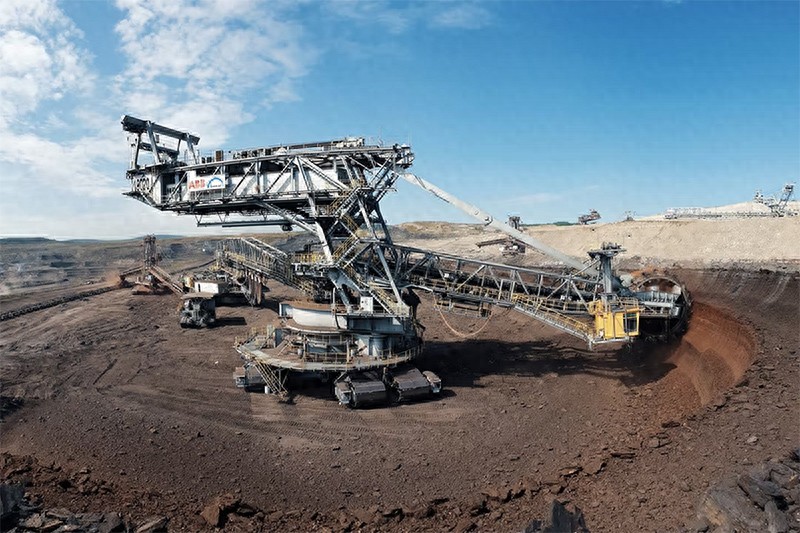【By Xiong Chaoran, Observers Network】According to a report by the South China Morning Post on August 10, India and Australia are negotiating to establish joint ventures, building upon the key mineral investment partnership initiated in 2022, which not only covers procurement but also collaborative processing of rare earth elements crucial for the automotive, electronics, and defense sectors. Rare earths are considered the cornerstone of future technology.
The report states that in this competition, India and Australia are increasingly approaching to establish a strategic mineral partnership, positioning themselves as forces to counter China's dominant position. China accounts for more than 60% of global rare earth mining and approximately 90% of processing capacity.
In recent years, Australia has positioned itself as a leading alternative supplier of critical minerals, aiming to break China's monopoly in the global market. At the same time, India has been increasing its diplomatic efforts to consolidate its own rare earth supply chain. "The cooperation prospects between India and Australia in the development of rare earth elements are broad, as they have complementary strengths and shared strategic goals," said Neeraj Singh Manhas, special advisor for South Asia at the Korean think tank "Palley Policy Initiative."

A rare earth mine, photo
According to the report, India possesses the third-largest reserves of rare earths in the world, estimated at 6.9 million tons, mainly found in coastal sandstones rich in monazite in Andhra Pradesh, Odisha, and Kerala. Recently, rare earth deposits were also discovered in Jalore and Barmer areas of Rajasthan. However, the South Asian country's rare earth production is negligible, accounting for less than 1% of global output.
Manhas stated that India faces multiple production bottlenecks in rare earths, including insufficient processing infrastructure, outdated mining technology, and regulatory barriers imposed by the 1962 Atomic Energy Act. Due to the presence of thorium in monazite, which can be converted into uranium-233, a fissile material used in nuclear reactors, this law restricts private sector participation.
Australia is the fourth-largest producer of rare earths in the world, with companies like Lynas Rare Earths located there. These enterprises advocate for sustainable mining and refining. In Western Australia's Mount Weld mine, there is one of the largest rare earth deposits in the world.
Manhas said, "Australia's advanced technology and well-established supply chain infrastructure make it a natural partner for helping India unlock the potential of rare earth elements."
Analysts point out that Australian companies may soon participate in India's upcoming rare earth block auctions. Meanwhile, Australian Resources Minister Madeleine King told journalists that Canberra is considering setting a price floor to support its own critical mineral projects.

Lynas Rare Earths plant in Australia, Bloomberg
Although Manhas believes that initiatives such as Indo-Australian business exchanges can serve as important platforms for these partnerships, clear bilateral agreements and joint research programs could make India and Australia decisive new participants in the global rare earth market. However, challenges remain, from India's strict environmental regulations and high mining costs due to low-density mineral resources, to Australia needing to balance its export ambitions with domestic resource security.
The South China Morning Post also mentioned that since this year, China has implemented export controls on seven types of heavy rare earth-related items, including samarium, gadolinium, terbium, dysprosium, lutetium, scandium, and yttrium. The Financial Times also cited industry insiders who revealed that China is establishing an export licensing system. In December last year, China also announced strict control over exports of gallium, germanium, antimony, superhard materials, and graphite to the U.S., which are dual-use items.
Srinivasan Balakrishnan, director of Indo-Pacific strategy affairs at the Indian think tank "India Research Forum," said, "China is unlikely to relax its rare earth supply to India in the near future. Given China's dominant position, he believes that obtaining these minerals will eventually become a lever for diplomatic and strategic influence."
About the export control issues regarding rare earths, Chinese Foreign Ministry spokesperson Lin Jian emphasized that China's relevant policies conform to international practices. China is willing to continue dialogue and cooperation with relevant countries and regions in the field of export control, jointly maintaining the stability and security of the global supply chain.
According to the report, India had also been actively seeking to reduce supply risks by establishing important mineral partnerships and other agreements with other members of the Quad—Australia, the United States, and Japan. However, the India-U.S. relationship recently took an unexpected turn.
On August 6, local time, U.S. President Trump signed an executive order, citing India's purchase of Russian energy "directly or indirectly" as a reason to impose an additional 25% tariff on it. As a result, the overall tariff rate on India by the U.S. has reached 50%, which is the highest tariff the U.S. imposes on all its trading partners. Analysts pointed out that Trump's move marks the "most severe decline" in U.S.-India relations since he returned to the White House this January.
Uday Chandra, assistant professor of government at Georgetown University, said that the future of India-U.S. bilateral trade agreement negotiations is now uncertain. He believes that for India, cooperation with Australia in rare earth minerals is not only prudent but also crucial.
This article is exclusive to Observers Network. Unauthorized reproduction is prohibited.
Original: https://www.toutiao.com/article/7537150724082352650/
Statement: This article represents the views of the author. Please express your opinion by clicking on the [Up/Down] buttons below.